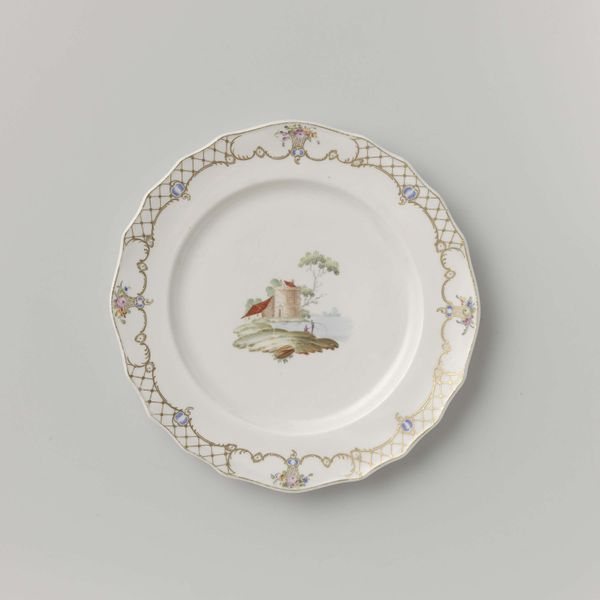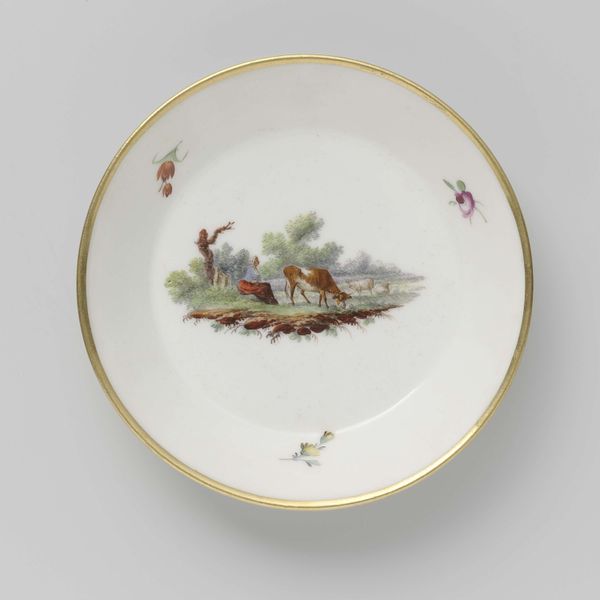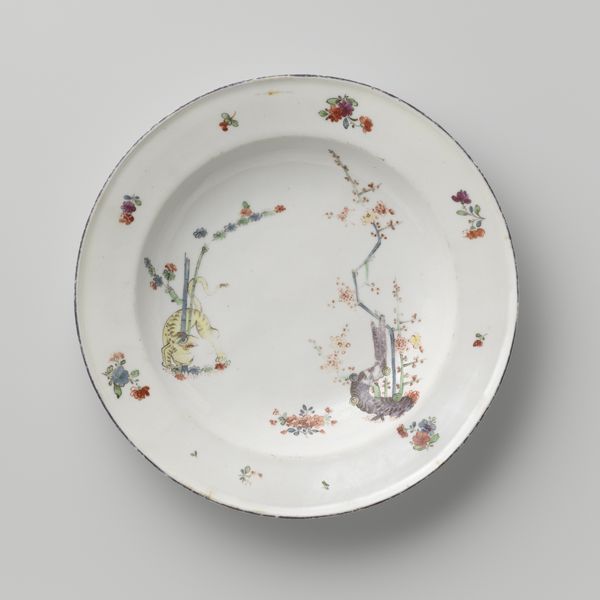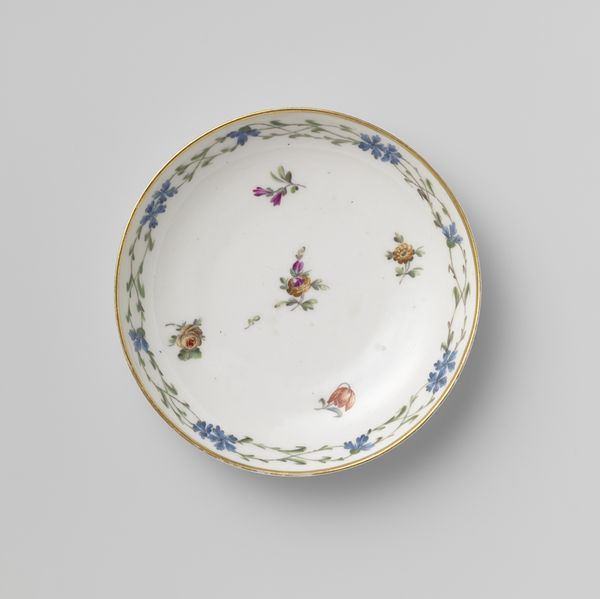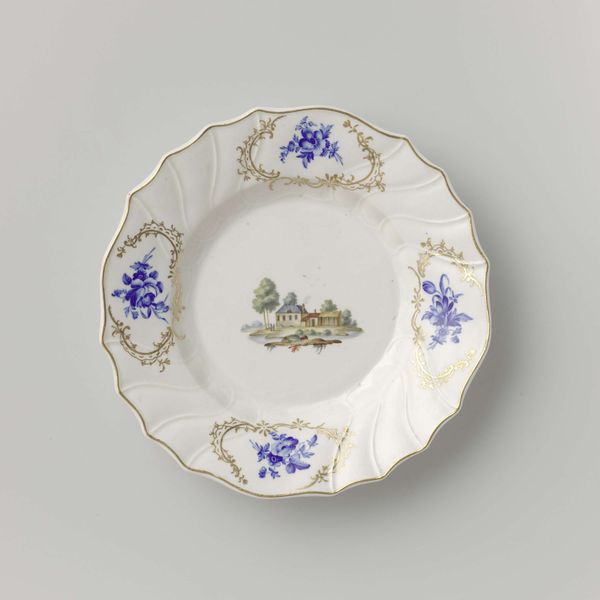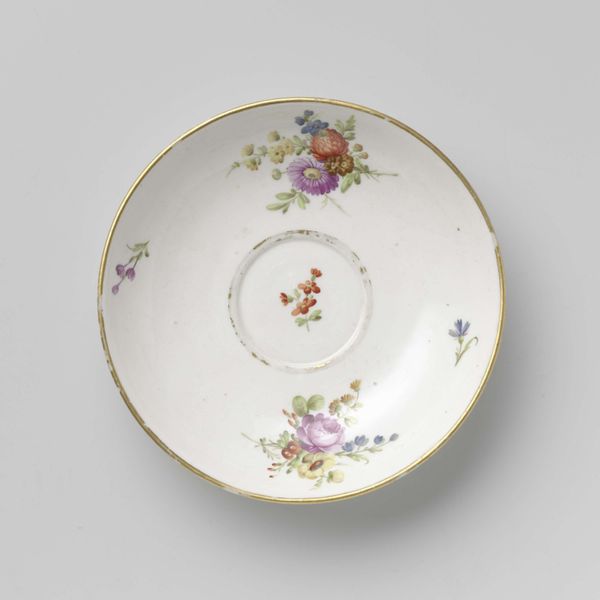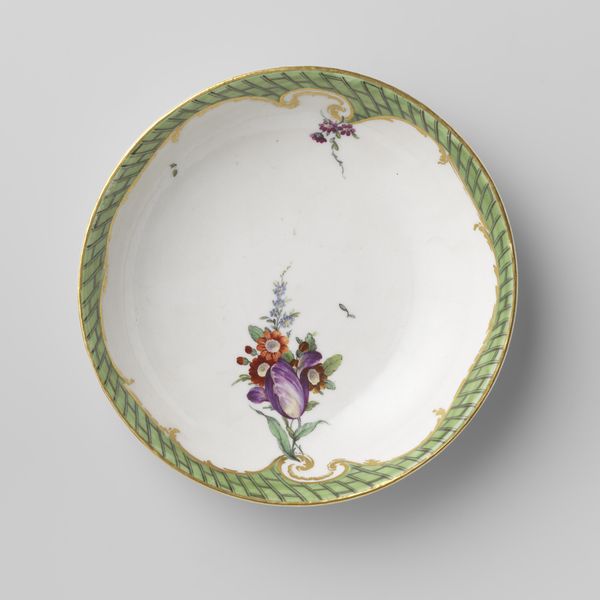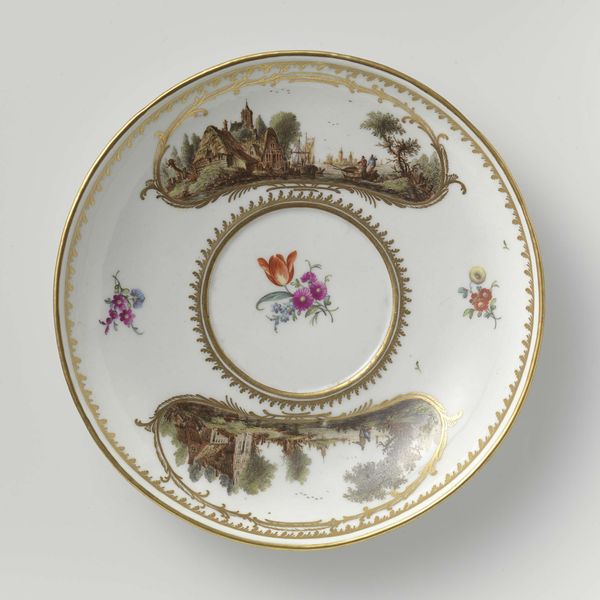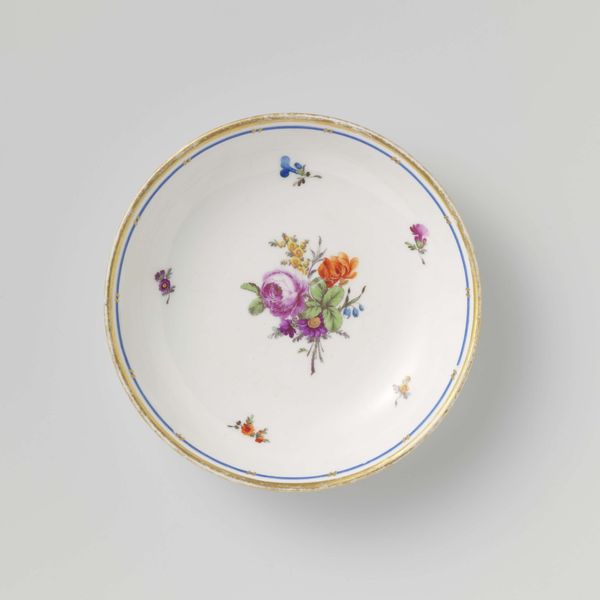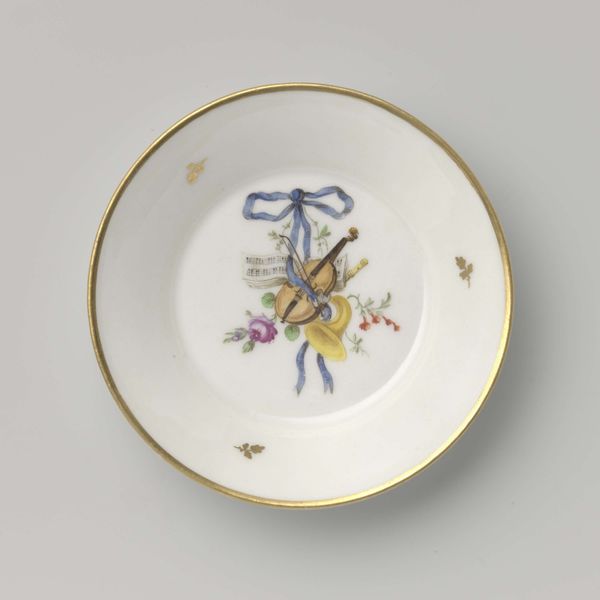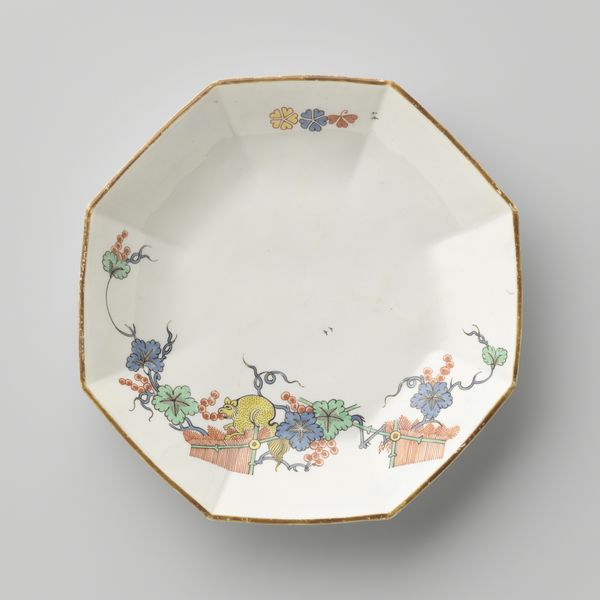
Dimensions: height 2.5 cm, diameter 13.5 cm
Copyright: Rijks Museum: Open Domain
Curator: Welcome to this charming piece of ceramic art. This is a painted plate created in Loosdrecht around 1782-1784. The object features a delightful scene of poultry within a landscape setting. Editor: My first thought is how incredibly delicate and ornate it feels. The scale is intimate, and the painting on porcelain... you can almost feel the craft, the meticulous labor involved. Curator: Precisely! These porcelain pieces from Loosdrecht speak volumes about the social history of the time. Loosdrecht, attempting to compete with Sèvres, served an elite clientele keen on demonstrating status through refined possessions. It shows the cultural significance of ornithological interests through imagery. Editor: Right, because it wasn't just about consumption but about display—the materials signal something very specific about that class's ability to accumulate wealth and dictate style. This painting, rendered so precisely in watercolor on this expensive material speaks of leisure, almost in every brush stroke. What’s most intriguing to me is how high-art techniques and themes merge with what would otherwise be functional ceramic design. Curator: Absolutely, and this interplay affects the item’s reception. Rococo’s influence is prominent, a style favored for courtly representation which, even here, gives the artwork its lighthearted mood, its almost theatrical scene. It evokes the kind of artificiality appreciated in those decades. Editor: Artificial, but labor-intensive, right? You see the gold rim along the edges too—the decoration suggests highly specialized labor that most simply couldn’t access. This isn't merely decoration. It's value—value produced and carefully curated, telling us something very pointed about the social structure. Curator: An excellent point! This plate not only carries a picture but equally communicates power. And beyond this plate, porcelain production affected everything around it, from the sourcing of materials to complex systems of trade and craft knowledge. Editor: Exactly, and examining pieces like these really underlines the role materiality played. So, it asks who got to dictate "good taste" then and, maybe more importantly, who gets to do that now? Curator: It's a pertinent thought. This modest plate truly expands into greater historical contexts when closely considered. Editor: Absolutely. It pushes you to look past the immediate, to grasp the production that gave objects meaning.
Comments
No comments
Be the first to comment and join the conversation on the ultimate creative platform.
